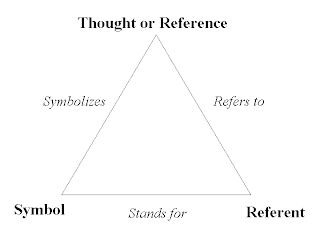Using KOMA-script for my dissertation, does make me a bit confuse. Reading its manual is a bit daunting since I am a new user of KOMA-Script although I am a self-proclaimed average LaTeX user. Here I will give a guide to create fancy header. I will not explain a lot, just directly put my LaTeX source so that you can get them directly to create a fancy header. Here's the source:
I put all of my main full source so that you can imagine how to fit KOMA-Script into your source. The part of the source which come from KOMA-Script listed below:
Preparation
Header Definition
Display "Abstract" Title
The result is the document which has page number as the footer in every beginning of the chapter and the fancy header with chapter - section - page number and line for the next pages.
I believe that you love to read the manual, so if you want to know the meaning of the commands above, have a look at KOMA-Script manual. :)
\documentclass{scrreprt}
\usepackage{url}
\usepackage{listings}
\usepackage[usenames,dvipsnames]{color}
\usepackage[T1]{fontenc}
\usepackage{wrapfig}
\usepackage[pdftex]{graphicx}
\usepackage{setspace}
\usepackage[Sonny]{fncychap}
%\usepackage[Bjornstrup]{fncychap}
\usepackage[automark]{scrpage2}
\begin{document}
\pagestyle{scrheadings}
\setheadsepline{.4pt}
\clearscrheadings
\automark[section]{chapter}
\ihead{\headmark}
\ohead{\pagemark}
\cfoot{}
\KOMAoptions{abstract=on}
\definecolor{light-gray}{gray}{0.95}
\lstset{numbers=left,basicstyle=\scriptsize,numberstyle=\scriptsize,frame=tb,captionpos=b,backgroundcolor=\color{light-gray},showspaces=false,showstringspaces=false}
\input{./cover.tex}
\input{./abstract.tex}
\tableofcontents
\listoffigures
\lstlistoflistings
\input{./01-introduction.tex}
\input{./02-background.tex}
\input{./03-research-goals.tex}
\input{./04-research-contributions.tex}
\input{./05-future-directions.tex}
\input{./06-bibliographies.tex}
\end{document}
I put all of my main full source so that you can imagine how to fit KOMA-Script into your source. The part of the source which come from KOMA-Script listed below:
Preparation
\documentclass{scrreprt}
\usepackage[automark]{scrpage2}
Header Definition
\pagestyle{scrheadings}
\setheadsepline{.4pt}
\clearscrheadings
\automark[section]{chapter}
\ihead{\headmark}
\ohead{\pagemark}
\cfoot{}
Display "Abstract" Title
\KOMAoptions{abstract=on}
The result is the document which has page number as the footer in every beginning of the chapter and the fancy header with chapter - section - page number and line for the next pages.
I believe that you love to read the manual, so if you want to know the meaning of the commands above, have a look at KOMA-Script manual. :)












Fancy Header with KOMA-Script